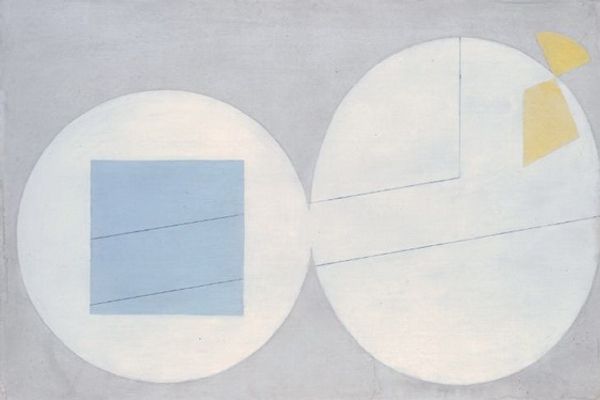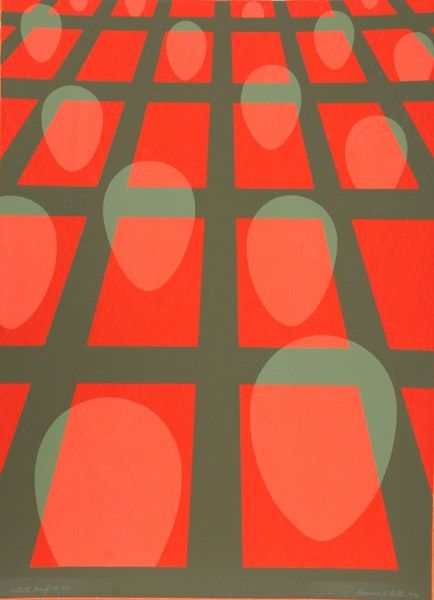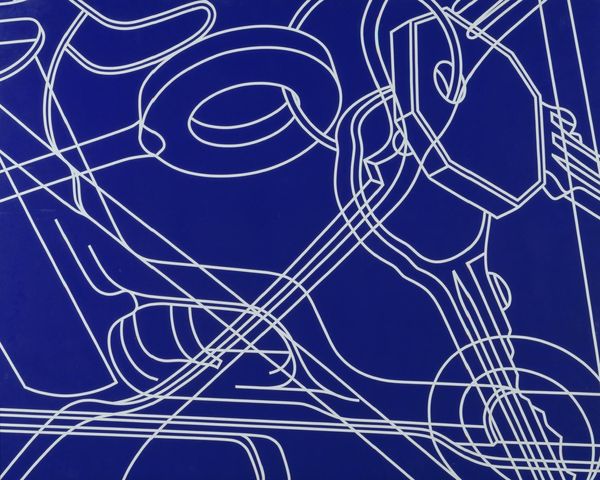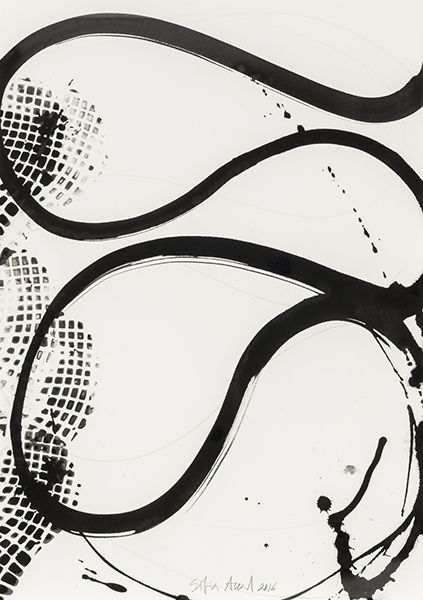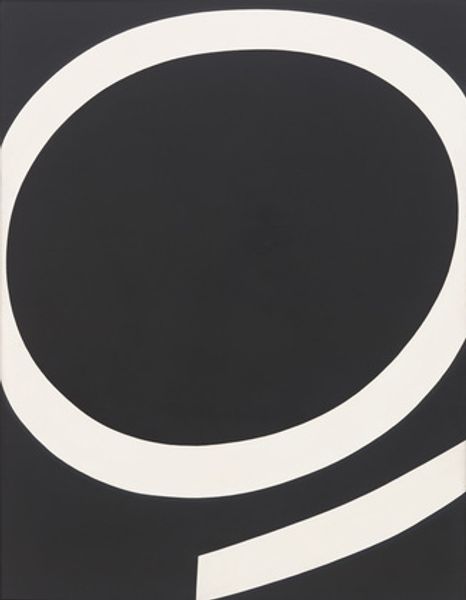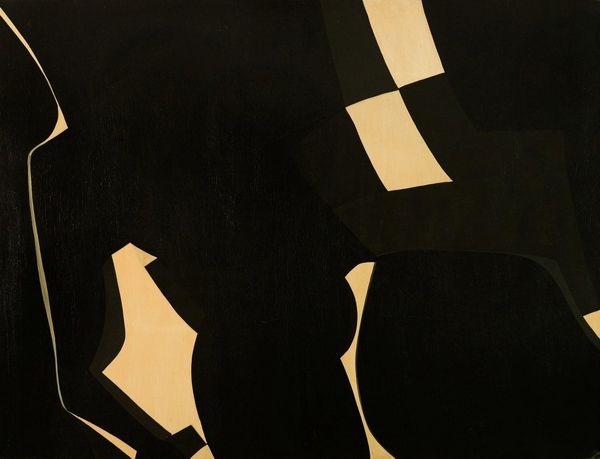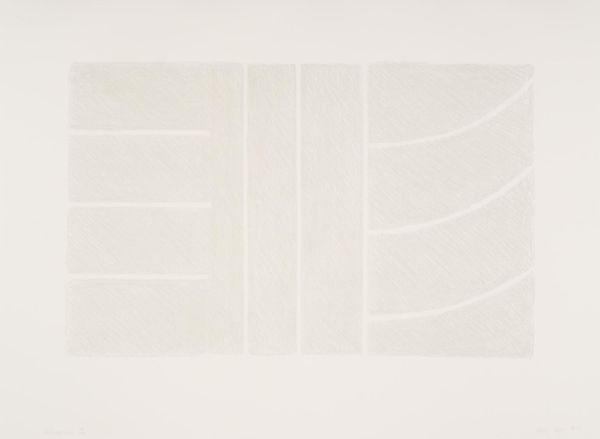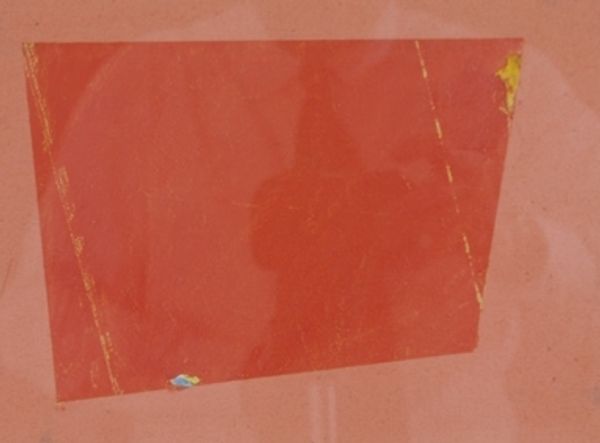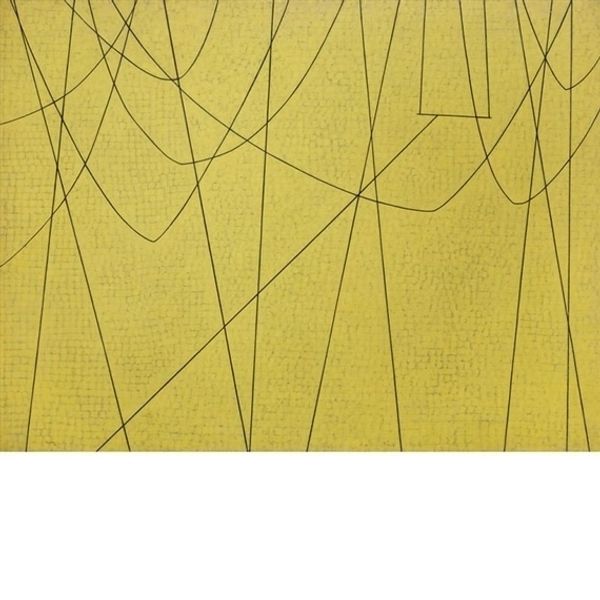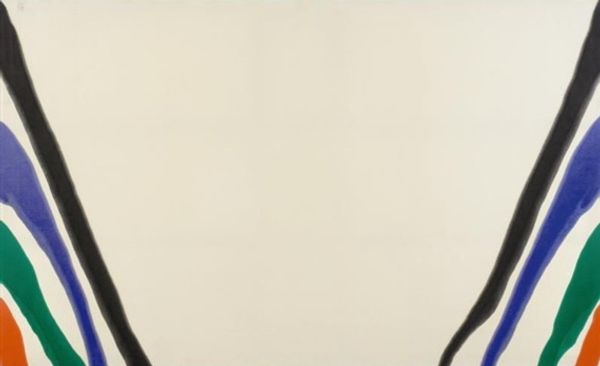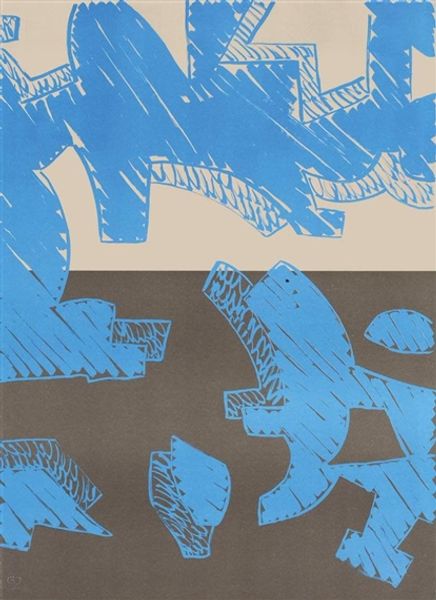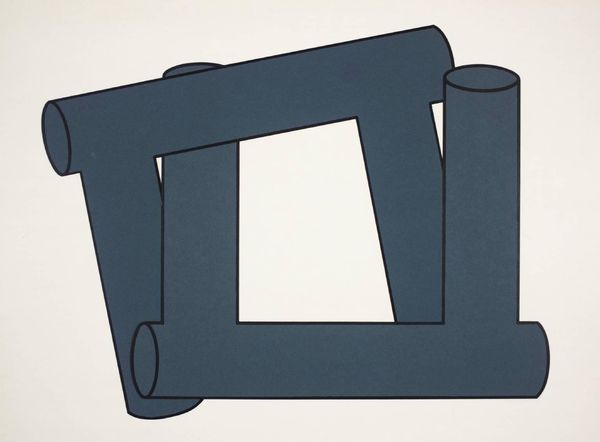
#
colour-field-painting
#
geometric
#
abstraction
#
line
#
modernism
Copyright: Fernando Lanhas,Fair Use
Editor: We're looking at Fernando Lanhas' "O32-60" from 1960. It's a canvas marked by cool blue geometric shapes against a pale ground. It feels almost like a diagram, but evokes a sense of quiet mystery. What do you see in this piece? Curator: The stark simplicity immediately catches my eye. Notice how the cool blues interplay with the white—almost icy. The circle, the lines… they aren't just shapes, but evoke symbolic language, hinting at something archetypal. Editor: Archetypal, as in...? Curator: As in, reaching into our collective unconscious. Think about it. The circle can represent wholeness, unity, even the divine. Lines suggest direction, pathways, boundaries. These are primal visual cues our minds have interpreted for millennia. Do you see any similarity to the symbolic language we find in non-Western art, specifically related to cosmology? Editor: I can see that! The lines could almost map constellations, or the circle might be a moon. Curator: Exactly! Lanhas seems to be tapping into something timeless here, bridging the gap between pure abstraction and symbolic representation. Modernism often rejects overt symbolism, yet artists subconsciously integrate these visual motifs. What kind of psychological impact do you think such images had on the viewers in the 1960s? Editor: Maybe a sense of order in a chaotic world? A reassurance of underlying structure? Curator: Precisely. It's a dialogue between chaos and order, presence and absence. Editor: I hadn’t considered how deeply ingrained those geometric forms are in our understanding of the world. Curator: It demonstrates how even in abstraction, cultural memory persists. It’s exciting to see an artist engaging in a conversation with these enduring symbols.
Comments
No comments
Be the first to comment and join the conversation on the ultimate creative platform.
